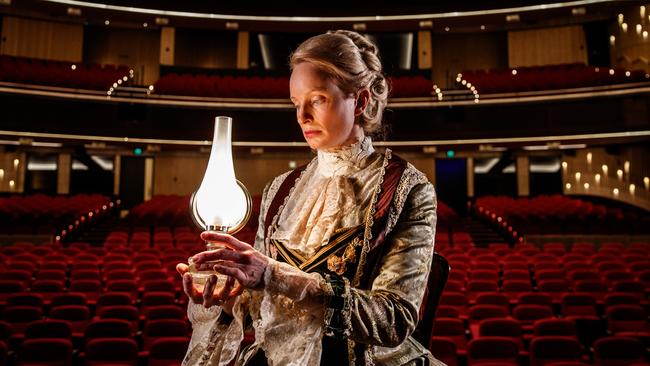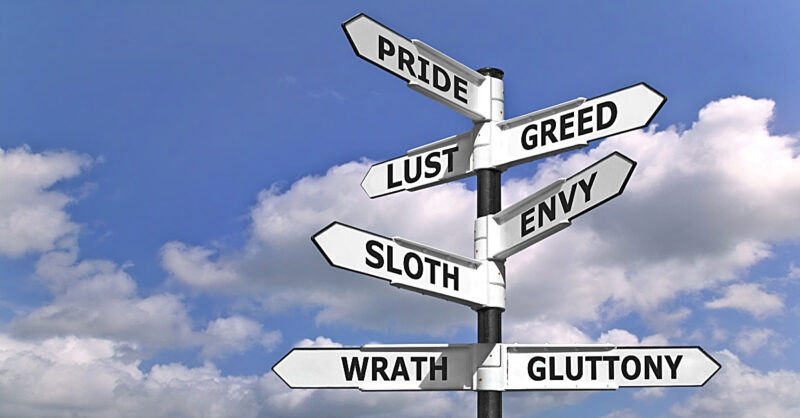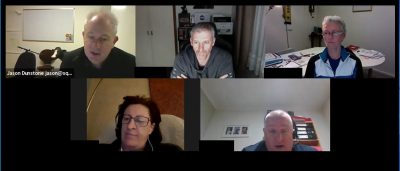Arts viewed as fundamental to economy
According to Square Holes’ August Mind and Mood survey of 400 South Australians, Younger age groups are making the biggest contribution to keeping our arts sector alive in a challenging environment, with strong online and offline support since April across art forms amongst 18-34 year olds.
The research reaffirms previous mind and mood summaries illustrating that younger South Australians are feeling psychologically challenged from 2020, yet are more financially confident than older age groups. Younger South Australians are more confidently spending dollars on eating out, take-away, travel entertainment, the arts and other activities.
South Australians aged 50+ recorded lower levels of arts participation since April, particularly 65+ year olds, with only around a small proportion participating online or offline.
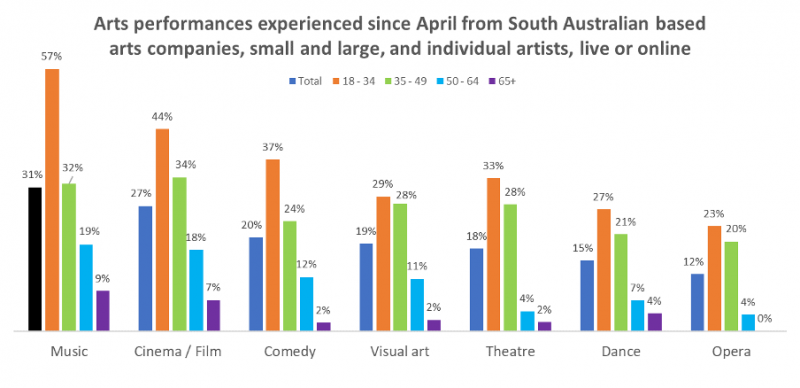
As would be expected given the social distancing norm of 2020, online has presented a platform for enjoying the arts, with many willing to pay for online arts performances. This is again particularly the case for younger South Australians. For example, 24% of 18-34 year olds noted they had experienced South Australian based music via paid online.
Going to indoor venues to experience arts was less common than online, other than for cinema and film, with 13% of South Australians going to a cinema since April, with this level 20% of 18-34 year olds and 19% of 35-49 year olds. Generally 50+ year old South Australian indicated lower levels of arts engagement since April.
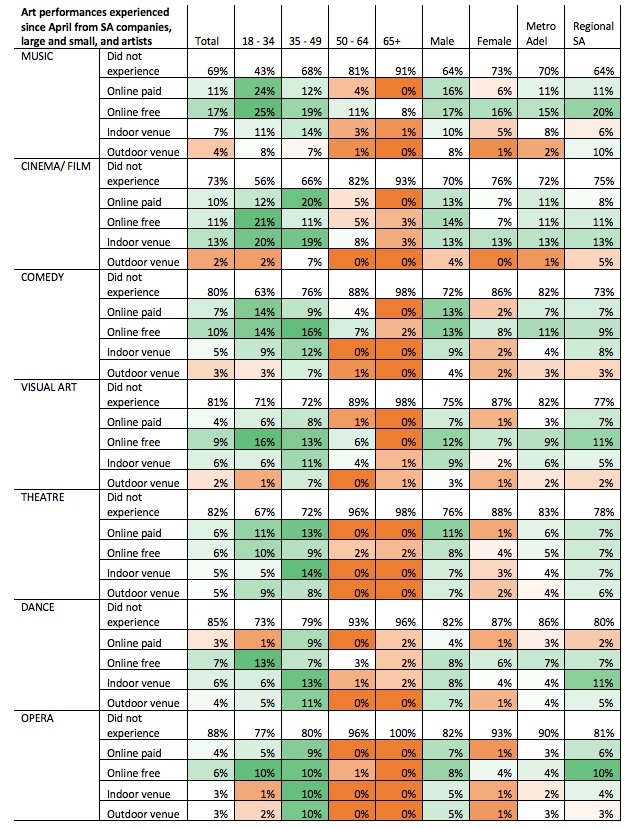
When asked to name good examples of ‘innovation in the arts’ during 2020, 12% were able to do so, with a wide array of suggestions made from larger endeavours to individual artists, including the Adelaide Fringe online offering, the Colour Tumby Bay Street Art Festival, State Theatre South Australia’s Decameron 2.0, SALA and others offerings leveraging Facebook, Instagram and other online and offline platforms.
One in five South Australians have already booked arts performances for coming months in the remainder of 2020. This level is significantly higher for younger South Australians – 39% of 18-34 year olds and 28% of 35-49 year olds, compared with only 6% of South Australians aged 50+.
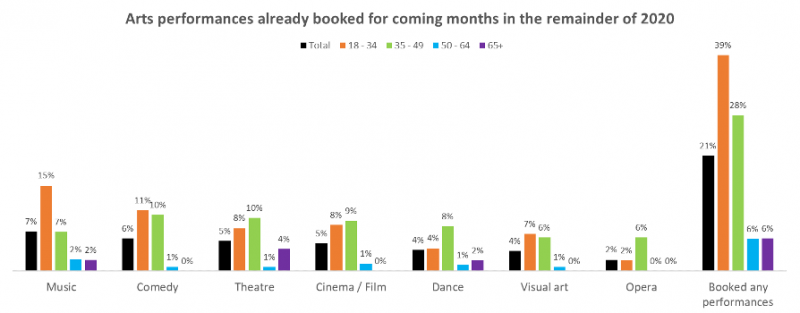
When asked ‘why does the arts matter for South Australia?’ 36% were able to provide a reason (i.e. 64% were unable to articulate why the arts matters).
The clear leading value of the arts was named as economic benefits (39%) including jobs, economic benefits from associated tourism and stimulating of spending.
As one research participant noted “I feel it brings a lot of money into our economy and creates a good vibe around the city.”
Culture (19%) and lifestyle (13%) were also prominent benefits of the arts …
“An enriching role in growing understanding and empathy and bringing our community together.”
“It is a framework for society and reflects the times and conditions. It is important for entertainment, jobs, values, information, reflection, education, and any other number of aspects.”
“Because it gives people something to do besides sport.”
Other contributions of the arts were noted as maintaining South Australia’s reputation as the art / festival state (13%), mental health benefits and stimulating wider creative thinking (7%) and supporting local artists (7%).
This has certainly been a challenging year for South Australia’s arts sectors. Findings such as these and other statistics collected by Square Holes and other organisations such as ‘I lost my gig’ illustrate huge income slides for many arts businesses and individuals in this critical sector.
It is likely the coming years will continue to be challenging for South Australia. Many, particularly younger people, are keen to head to a show and buy tickets online and offline. Yet, there does appear to be a high level of apathy amongst South Australians. Many have become comfortable just staying home and watching Netflix, Stan or whatever, rather than supporting our invaluable arts sector.
This will be the time for clever thinking from our government, arts sector, arts companies and individual artists. A time for supporting the arts and selling the lifestyle benefits and critical role to our economy and jobs.
